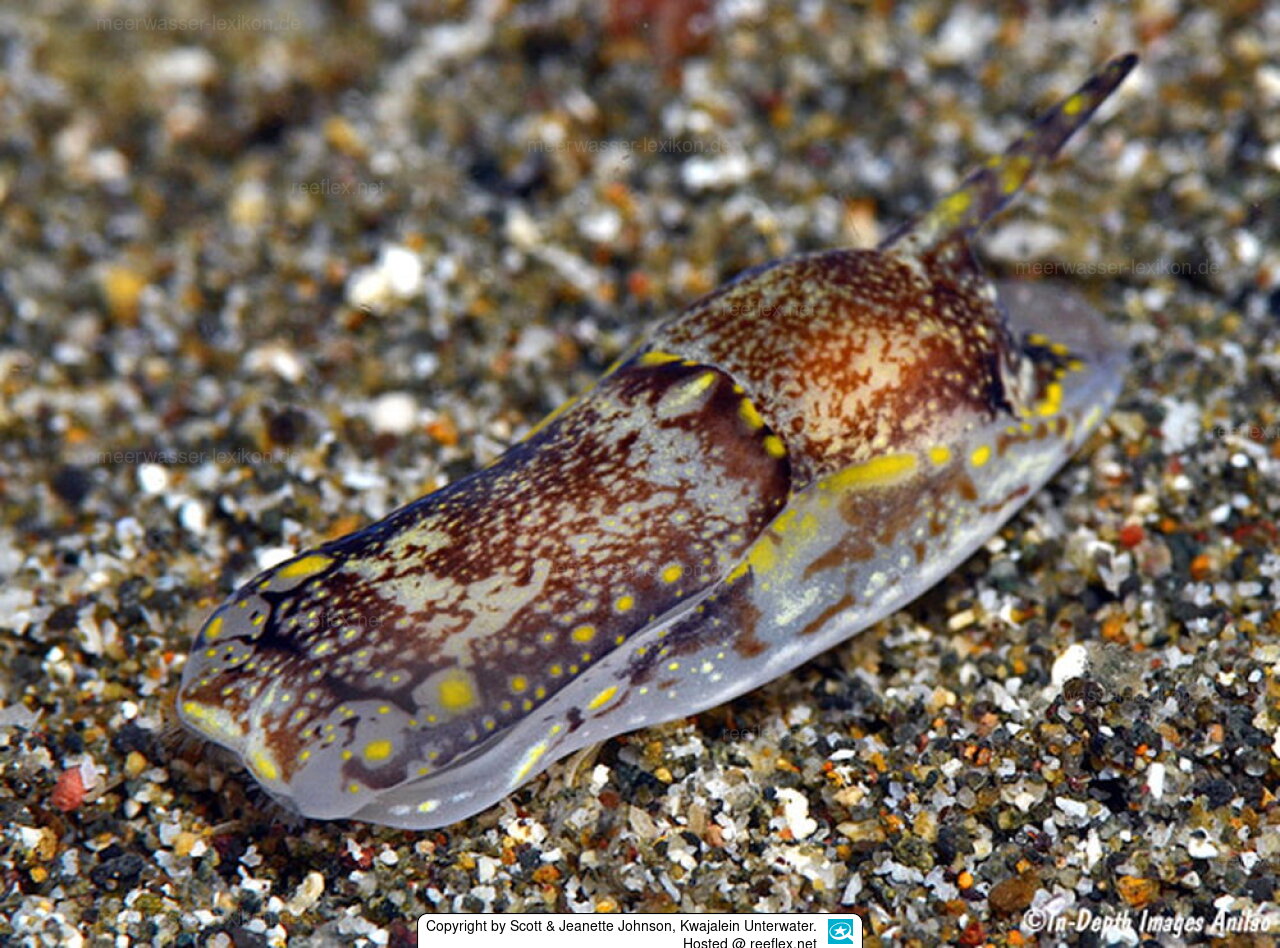Info
Philinopsis buntot Gosliner, 2015
Philinopsis buntot belongs to the family Aglajidae. The family Aglajidae includes elongate sea snails with a small internal shell. Most of them are nocturnal.
Philinopsis buntot belongs to the Aglajidae family. Members of the family have an elongated body and a small, internal shell. Most are nocturnal. They live on or in sandy soil and feed mainly on flatworms.
Three new species of Aglajid opisthobranchids have been described from the Verde Island Passage in the Philippines. One of them was Philinopsis Buntot. The head shield snail was found there at two locations in Batangas, Luzon.
It differs from all other Aglaids in having a protrusion extending from the rear end of the rear shield. In addition, Philinopsis buntot lacks the distinctive tail or a central posterior appendage. The living animals are 7-12 mm long and 3-6 mm wide. The general body color of the living animal resist is translucent white with varying amounts of reticulate brown pigment on the dorsal surface. Opaque white patches may also be present on specimens with sparse brown pigment. The brown pigment often surrounds small yellow spots on the dorsal surface. Larger yellow spots are visible on the edges of the head and hind shields and on the edges of the parapodia.
So far, the head shield snail is only known from the southern island of Luzon in the Philippines. There she lives on clean sand and is nocturnal. During the day you will not see the snail, because it buries itself in the ground and waits there for the night.
The species name "buntot" is the Tagalog word for tail and refers to this species' distinctive posterior appendage. Tagalog is the most widely spoken language in the Philippines.
Philinopsis buntot belongs to the family Aglajidae. The family Aglajidae includes elongate sea snails with a small internal shell. Most of them are nocturnal.
Philinopsis buntot belongs to the Aglajidae family. Members of the family have an elongated body and a small, internal shell. Most are nocturnal. They live on or in sandy soil and feed mainly on flatworms.
Three new species of Aglajid opisthobranchids have been described from the Verde Island Passage in the Philippines. One of them was Philinopsis Buntot. The head shield snail was found there at two locations in Batangas, Luzon.
It differs from all other Aglaids in having a protrusion extending from the rear end of the rear shield. In addition, Philinopsis buntot lacks the distinctive tail or a central posterior appendage. The living animals are 7-12 mm long and 3-6 mm wide. The general body color of the living animal resist is translucent white with varying amounts of reticulate brown pigment on the dorsal surface. Opaque white patches may also be present on specimens with sparse brown pigment. The brown pigment often surrounds small yellow spots on the dorsal surface. Larger yellow spots are visible on the edges of the head and hind shields and on the edges of the parapodia.
So far, the head shield snail is only known from the southern island of Luzon in the Philippines. There she lives on clean sand and is nocturnal. During the day you will not see the snail, because it buries itself in the ground and waits there for the night.
The species name "buntot" is the Tagalog word for tail and refers to this species' distinctive posterior appendage. Tagalog is the most widely spoken language in the Philippines.







 Scott & Jeanette Johnson, Kwajalein Unterwater
Scott & Jeanette Johnson, Kwajalein Unterwater










